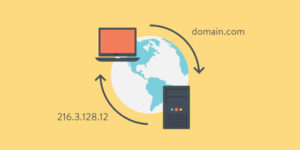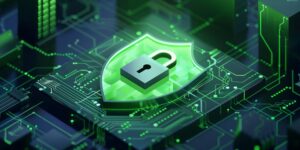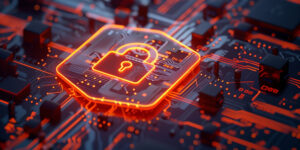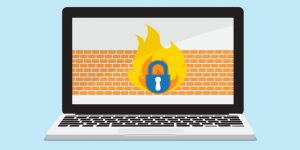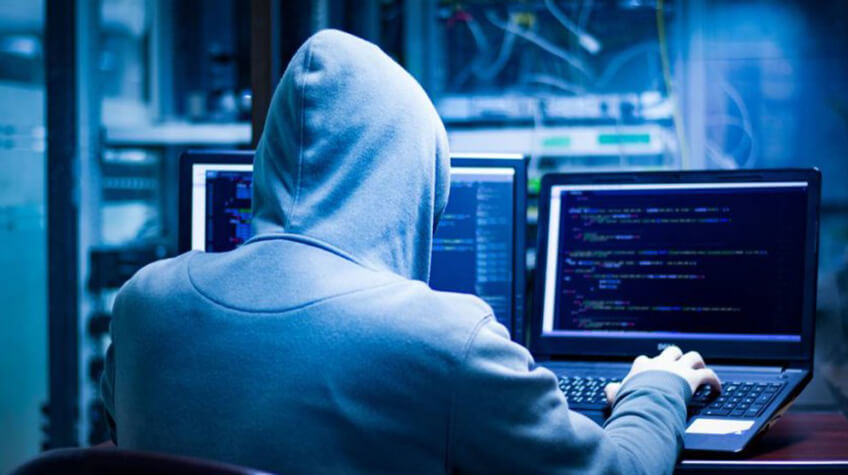
We all know what cyber-attacks are, right? However, many of us fall victim to cyber-attacks. Cyber-attacks can be extremely dangerous; in addition to modifying the way your system operates, cyber attackers can also steal valuable information such as credit card numbers, personal information, or other information from your device.
Cyber-attacks don’t just happen; they are, in fact, deliberate; if you use the internet with your PC or mobile device, you are putting yourself in grave danger. But the question is, why do cyber-attacks happen in the first place? And how can you defend yourself against this ever-increasing threat? This is what we’re going to talk about in this post.
Scroll down to read the full article.
Table of Contents
- What exactly is a cyber-attack?
- Different Types of Cyber-Attacks
- Why do cyber-attacks happen?
- 12 Best Tips To Prevent Cyber-Attacks
- Keep your system/devices neat and clean
- Make sure your software is up-to-date
- Don’t be tempted to click on “Freeware” programs
- Be mindful about what you share on your social media handles
- Be aware of what you download and install on your device
- Set up a firewall
- Scan all of your downloaded files
- safe authentication techniques
- Never save pins or passwords on a computer or network
- Use anti-virus
- Use only secure websites
- Have a dedicated team to handle cyber-attacks
What exactly is a cyber-attack?
A cyber-attack is a malevolent and purposeful attempt by an individual or organization to breach another person’s or organization’s information system. Typically, the attacker hopes to gain some sort of advantage by interrupting the victim’s network or device.
Different Types of Cyber-Attacks
Here are some common types of cyber-attacks that you need to be aware of:
1. Malware
Malware, often known as malicious software, is a type of software that is meant to enter, harm, or attack your computer without your knowledge or consent. It’s a broad term used to describe software that performs specific tasks by utilizing a range of combative, disruptive, or unpleasant software or program code.
It comprises the bulk of Rootkits, spyware, adware, botnets, and other dangerous and undesirable software, as well as computer viruses, worms, and Trojan horses. With the rise of online marketing and legitimate cyberspace transactions, cybercrime, such as malware, began to proliferate widely and assault victims’ systems. Malware infects computer systems to impair or exploit networks to:
- Steal or damage essential data or information.
- Interfere with or change the system’s essential functionality.
- Tracking user activities without their permission.
- Swindle or extort money.
- Send fraudulent emails from your account to your clients or others to harm your name by introducing spam, pop-ups, or forced advertising.
Most common malware includes Viruses, Trojan, Spyware, Worm, Adware, Ransomware, Rootkits, Keyloggers, etc.
Related: What Is Malware? How to Prevent Malware Attacks
2. Phishing
Phishing is the practice of sending fraudulent emails that appear to come from a legitimate source. The purpose of phishing is to steal sensitive data such as credit card and login information or infect the victim’s computer with malware. It happens when an attacker poses as a trustworthy entity and convinces a victim to open an email or an instant message.
The recipient is eventually duped into clicking a malicious link, resulting in malware installation, system freeze due to a ransomware attack, or the exposure of sensitive information. Phishing is becoming a more widespread cyber threat today.
Different phishing techniques include false lottery, breach of trust, impersonation, data update, etc.
3. Denial-of-service attack
A denial-of-service (DoS) attack is a type of cyber-attack that floods systems, servers, or networks in order to exhaust resources and bandwidth.
As a result, genuine requests are unable to be fulfilled by the system. This attack can also be launched using many compromised devices, which is called a distributed-denial-of-service (DDoS) attack.
4. SQL Injection
A Structured Query Language, popularly known as SQL injection, occurs when an attacker injects malicious code into a server that uses SQL, forcing the server to divulge information it would not usually reveal.
An attacker might perform a SQL injection by typing malicious code into a search field on a susceptible website.
5. Man-in-the-middle attack
Eavesdropping attacks, often known as man-in-the-middle (MitM) attacks, occur when an attacker inserts himself into a two-party transaction, after interrupting the traffic, attackers filter and steal data.
The different entrance points for MitM attacks include,
- Attackers put themselves between a visitor’s device and the network when using unprotected public Wi-Fi. The visitor unwittingly transmits all information to the attacker.
- The other way round is that attackers infiltrate a device with malware that processes all of the victim’s data.
6. DNS Tunneling
DNS Tunneling is a type of cyber-attack in which data from other programs or protocols is encoded in DNS queries and responses. DNS tunneling allows thieves to embed malware or send stolen data into DNS queries, resulting in a covert communication channel that gets beyond most firewalls. DNS tunneling communicates non-DNS traffic through port 53 using the DNS protocol. It uses DNS to send HTTP and other protocol traffic.
There are several reasons to employ DNS Tunneling VPN services for nefarious purposes. They can be used to mask outbound traffic like DNS, allowing data to be shared over the internet to be hidden. DNS queries are altered for malicious purposes in order to infiltrate data from a hacked system to the attacker’s infrastructure. It can also be used for callbacks from the attacker’s infrastructure to an infected device for command and control.
What next….???
Now, it’s time to take a look at why do cyber-attacks happen?
You might be wondering why these attacks happen? Or you may be thinking, do people really have time to infiltrate others’ devices?
The answer is here…
- Cyber-attacks are increasing tremendously. Research indicates 53% of cyber-attacks resulted in losses of $500,000 or more. These attacks can be used for myriads of nefarious purposes, including data theft.
- The worldwide information security market is forecast to reach $170.4 billion in 2022, reported by Gartner.
- According to Gartner, the global information security industry is expected to reach $170.4 billion in 2022.
- According to the Verizon research, hacking was used in 45 percent of breaches, malware was used in 17 percent, and phishing was used in 22 percent.
Why do cyber-attacks happen?
Although some hackers get a thrill or a sense of accomplishment from bulldozing others’ networks or computer systems, most cyber-attacks are either criminal or political in nature. Here are the most common reasons why cyber-attacks happen:
1. Cyber-attacks for the Financial Benefit:
This is a new take on extortion that can damage both businesses and individuals. There are numerous variations, but the most common is when hackers seize control of a victim’s computer and freeze it, then promise to restore access once a ransom is paid.
2. Cyber-attacks for Defrauding a Company:
The diversion of funds from their legitimate destination to a fraudster’s account is typical of this type of attack. Phishing is a tactic used by criminals to extract enough information to launch an attack. They then gain access to email servers and send emails that appear to be genuine but aren’t. Invoice fraud is one of the versions of this technique. A legitimate provider sends an email notifying of a change of bank account data; however, the bank account details provided are those of a fraudster. This type of fraud frequently mixes cyber-attack aspects with offline elements such as social engineering.
3. Cyber-attacks for Data Breaches or Identity Theft:
When enormous volumes of information are exposed online, thieves can exploit it to perpetrate financial fraud. Some fraudsters may only require credit card numbers, purchase histories, and names and addresses to commit identity theft. Research indicates, criminals may accumulate personal data over time, boosting their potential to profit from it. They might, for example, gather a name and address from one breach and a credit card number from another, then combine the two to perpetrate identity theft.
4. Cyber-attacks for Political Motive:
Last but not least, there are politically driven cyber assaults. These assaults occur for propaganda purposes in order to harm the public’s perception of a particular state or government. It could also be used for more nefarious purposes, such as leaking sensitive intelligence, private information, or embarrassing information. Cyber-attacks might conceivably go even farther, with government-backed hackers creating malware to corrupt and destroy a weapons program or other critical infrastructure.
Are you worried about your computer security? Or thinking how you can secure your computers from cyber-attacks?
Worry not! Continue reading to learn how to protect your computers or devices from cyber threats.
12 Best Tips To Prevent Cyber-Attacks
You’ll be amazed to learn that protecting your PCs isn’t rocket science. You don’t have to be a cybercrime expert to protect yourself and your gadgets; in fact, even an amateur can easily prevent his devices from cyber-attacks. Here are some of the best tips to bypass cyber-attacks.
1. Keep your system/devices neat and clean
It is critical to keep your computer clean. Install a registry cleaner with extensive functions to wipe away obsolete entries, extra gaps, embedded keys, empty registry keys, remove trash files, and clean up your web activities on purpose to keep your personal information safe.
2. Make sure your software is up-to-date
When your system or software requires an update, do so immediately. This is because system and software developers may have discovered a significant security vulnerability in the prior version, necessitating an instant update. As a result, if you decline or are stubborn about completing the upgrade, you may be vulnerable to such security breaches. So the best is to validate and install all new software patches on a regular basis, to update your operating systems, browsers, software tools, plug-ins, and other software, and perform routine maintenance to ensure that all your software is up-to-date.
3. Don’t be tempted to click on “Freeware” programs
More often than not, people tend to click on “Freeware” without giving a thought, which turns out to be dangerous for them. Hence, it is essential to verify any “freeware” program (be it a music or movie program) before downloading it. There are Google Toolbar or Microsoft Bing that you can use to check the security of the links or free files.
This will prevent you from installing malware or bugs that might compromise your privacy, flood your computer with pop-up windows, slow down, or crash your machine.
4. Be mindful about what you share on your social media handles
Some people tend to share more than they require to share. For instance, many people use their date of birth, nicknames, and pins as passwords, which is very risky.
Cybercriminals are astute; the secret is to upload less, speak less, and know more. Use a password that includes capital, lowercase, and symbols to make it difficult for both man and machine to guess.
For example, instead of Rickie1234, use rICkIe!@#$.
5. Be aware of what you download and install on your device
Have you ever attempted to install a program?
And your gadget alerted you that it wasn’t coming from a reliable source?
Or maybe you tried to download a video, music, or PDF, but each time you were directed to an app?
Know that these downloads are potentially dangerous to your device. Don’t fall into the trap of downloading everything that comes your way. It’s not a good habit to get into! If left unchecked, a cyber-threat of any kind in your computer might badly affect your data or files. As a result, it’s critical to double-check each downloading link before proceeding.
If you’re viewing a movie or reading an article, for example, don’t click on the link that takes you to another page where you may download an app. Rather than ignoring your device’s security warning, it is recommended that you pay heed to it. You can even use URLVoid to determine whether a link that you’re going to download is safe or not.
6. Set up a firewall
A firewall is software that acts as a barrier between a computer system and the outside world, blocking unwanted access while enabling allowed communication. It’s a device with robust centralized management and reporting capabilities that prevents unauthorized users from gaining access to private networks connected to the Internet. Installing a firewall on your private network might help you prevent illegal access.
7. Scan all of your downloaded files
Thousands of apps are downloaded every day from the Internet. It’s tough to know which ones are keyloggers. Installing software without scanning it beforehand puts your PC at risk. When a file is scanned, it is determined if it is hazardous or not.
Some websites can scan a download by clicking on the download link if you don’t have any tool for it. But, it’s always good to have a dedicated program for scanning your file. Know that an infected device can affect your other devices when you connect your phone to your PC.
8. Make use of safe authentication techniques
Cyber-attackers easily abuse insecure authentication methods; it is vital to utilize safe authentication methods. As a result, using strong passwords with at least eight characters, including an uppercase letter, a lowercase letter, a number, and symbols, is suggested. For added security, you can use biometric techniques such as fingerprints, facial recognition, voiceprints, and so on. To enable multi-factor authentication, it’s also a good idea to use a PIN or security questions in addition to a password.
Also See: How Does Two Factor Authentication Work
9. Never save pins or passwords on a computer or network
Of course, having passwords saved ahead of time saves a lot of time. It is, however, the riskiest thing you can do. Cyber-criminals are always on the lookout for systems that are simple to break into. The easiest way to attract cyber-attacks is to save your pins or passwords on your computer or network. If you don’t want that to happen, make it a practice to log out of all of your accounts when you’ve finished using them.
10. Use anti-virus
Cyber-attackers often construct harmful applications that are non-removable and difficult to discover. These programs can’t be removed without a dedicated tool. Spyware, Worms, Trojans, Rootkits, Password Stealers, Tracking Threats, and other cyber threats that can cause your system to slow down or result in the loss of personal data or system settings changes, and other difficulties must be detected and completely removed. Therefore, using a competent anti-virus program can help secure your computer. Anti-virus software checks and removes malware from computer files.
11. Use only secure websites
BUT, how can you tell if a website is secure?
Understand that websites are similar to residential properties; some are fenced while others are not. And we all prefer to have fenced houses to have complete security and protection from external threats. Similarly, the Internet is extremely dangerous in terms of security, and users must ensure their safety to the fullest.
Some use SSL (secured socket layer) certificates to ensure their websites’ security. At the same time, others use CAPTCHA, especially in sensitive sections like the login page, for security purposes. It’s safe to use such websites. So, don’t get frustrated when next time you’re asked to solve CAPTCHA or authenticate yourself with a security question.
12. Have a dedicated team to handle cyber-attacks
Lastly, get the right people to handle this ever-increasing issue. Whether you’re a large corporation or a small business, having a specialized team to deal with cyber-attacks is critical. Ensure that professionals handle your network security. These cyber security engineers make sure that your systems are secure from any threat.
Individuals should also get their devices checked by a professional technician on a regular basis. Make sure the technician has a lot of experience and is someone you can trust. This is because some experts can physically infect your system with malware. If your system hangs a lot or does not respond, or some apps act strangely, you may be in danger. A deep scan with an anti-virus program or a visit to a technician may be required.
Wrapping it up…
So, the reasons mentioned above are why cyber-attacks happen! Hopefully, this post will help you locate and prevent any cyber-attacks. Remember that you don’t have to be afraid of these threats – Being vigilant and mindful, as well as employing the correct tools, is all it takes to avoid them.
Furthermore, you don’t need to be an expert to deal with cyber-threats; simply follow the abovementioned guidelines, and you’re good to go!

